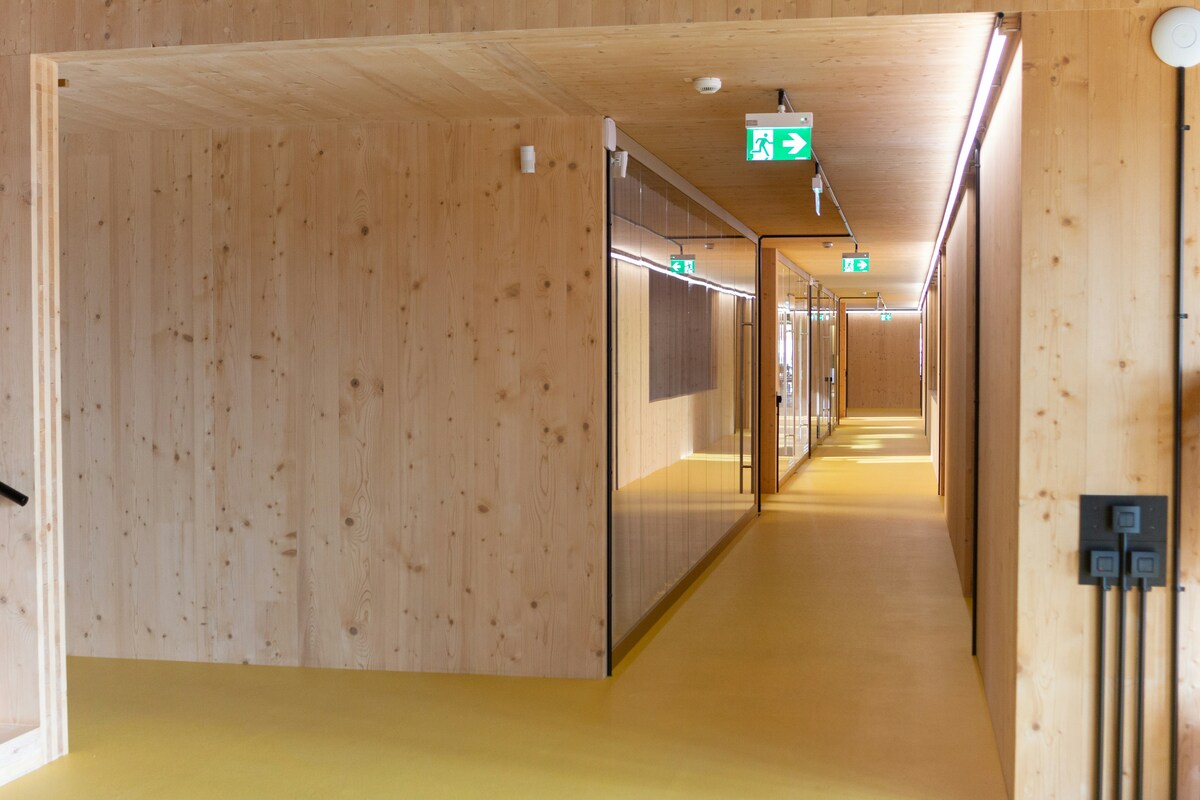The Rise of Cross-Laminated Timber (CLT): A Sustainable Solution for Construction
Published on: 29 Sep 2023
Cross-laminated timber (CLT) has emerged as a revolutionary material in the construction industry.

Cross-laminated timber (CLT) has emerged as a revolutionary material in the construction industry, offering both environmental sustainability and structural versatility. This engineered wood product is composed of layers of timber boards stacked perpendicular to each other and bonded together with adhesives. The result is a robust panel that boasts exceptional strength and stability, making it suitable for a wide range of applications in construction.
Production Process
The production of CLT begins with the careful selection of timber. Typically, softwood species such as spruce, pine, or fir are used due to their strength and availability. The timber is then kiln-dried to reduce its moisture content, ensuring dimensional stability.
Once dried, the boards are precisely cut to size and arranged in perpendicular layers. Each layer is bonded together using formaldehyde-free PUR adhesive, to create a solid panel. The panels can vary in thickness, typically ranging from 60 to 320mm, depending on the specific requirements of the project.
Construction Advantages
CLT offers several advantages over traditional building materials like concrete and steel:
- Sustainability: One of the most significant advantages of CLT is its sustainability. Timber is a renewable resource, and CLT production requires less energy compared to steel or concrete manufacturing. Additionally, using wood products in construction can help mitigate carbon emissions by sequestering carbon dioxide within the building.
- Strength and Durability: Despite being lightweight, CLT panels exhibit exceptional strength and stiffness, making them suitable for constructing tall buildings and large-span structures. CLT also performs well under fire conditions, as the charring of the outer layers can protect the inner layers, maintaining structural integrity.
- Speed of Construction: CLT panels are prefabricated off-site to precise specifications, reducing on-site construction time and labor costs. The panels can be rapidly assembled using simple connections, accelerating the overall construction process.
- Design Flexibility: CLT’s versatility allows architects and engineers to explore innovative design solutions. Its ability to span long distances without the need for additional support columns opens up new possibilities for open-plan layouts and architectural creativity.
Future Demand and Market Outlook
The demand for CLT is on the rise, driven by increasing awareness of sustainable construction practices and the need for alternative building materials. Several factors contribute to the optimistic outlook for CLT:
- Regulatory Support: Governments worldwide are implementing policies and regulations to promote sustainable building practices and reduce carbon emissions. Many jurisdictions offer incentives and certification programs to encourage the use of CLT and other mass timber products.
- Urbanization and Population Growth: The global population continues to urbanize rapidly, driving the need for new buildings and infrastructure. CLT presents an attractive solution for high-density urban development due to its lightweight and prefabricated nature.
- Technological Advancements: Ongoing research and development efforts are focused on further improving the performance and efficiency of CLT. Advancements in manufacturing processes, adhesive technologies, and digital design tools are enhancing the quality and affordability of CLT products.
- Architectural Trends: Architects and developers are increasingly incorporating natural materials like wood into their designs to create sustainable, biophilic spaces. CLT’s aesthetic appeal, combined with its structural capabilities, positions it as a favored choice for modern building projects.
In conclusion, the production and adoption of CLT represent a significant shift towards more sustainable and resilient construction practices. As the construction industry continues to prioritize environmental stewardship and innovation, CLT is poised to play a central role in shaping the cities of the future. With ongoing advancements in technology and growing market demand, the outlook for CLT remains bright, offering a greener, more sustainable path forward for the built environment.